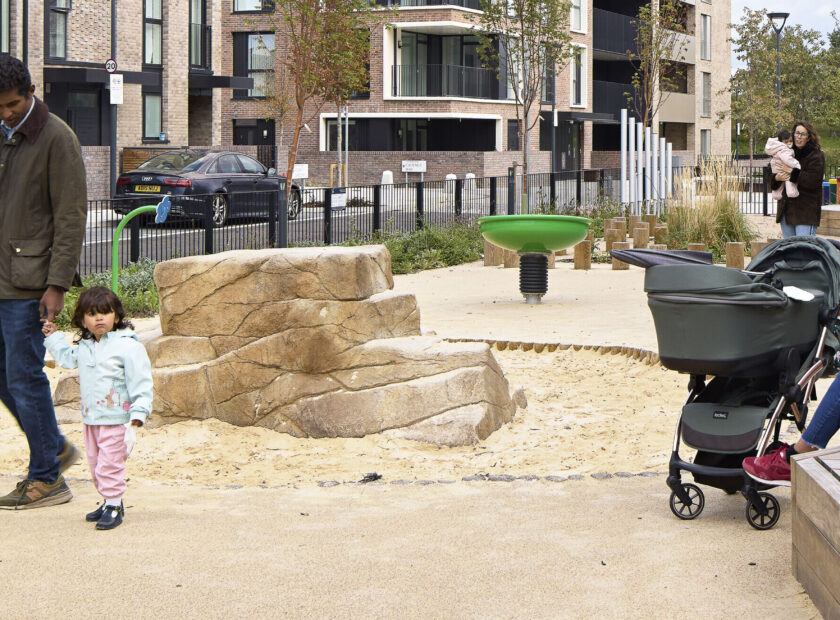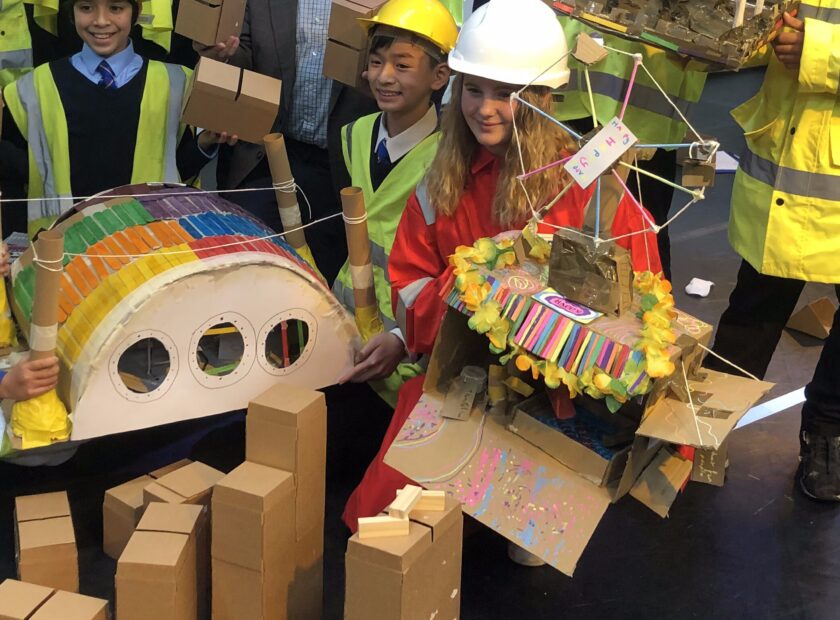What makes a place child-friendly – not just in form, but in process?
Momentum is growing to create places where children and young people can thrive. Yet, when we look for inspiration, it can be hard to find examples from close to home. This collection of case studies, developed by the TCPA with A Place in Childhood (APiC), delivers inspiration as well as practical learning and knowledge from places and projects meaningfully responding to the rights, needs and voices of children and young people in the built environment.
Creating child-friendly places is not a single intervention or design feature, but a holistic and long-term commitment to inclusive, thoughtful planning
A Place in Childhood
Whether through the legacy of past public housing models, the strategic embedding of children’s rights into planning processes, or the creative involvement of young people in shaping public space, each case study shows how children and teenagers can help forge places that are better for everyone.
The most successful approaches combine robust leadership, sustained community engagement and design quality. They show how local authorities and partners can move beyond consultation to genuine collaboration—where children’s ideas and lived experiences actively shape decision-making. In turn, fostering a sense of belonging, safety and pride, and helping young people develop skills, confidence and agency.
These case studies offer valuable inspiration for local authorities, developers, designers and community organisations seeking to embed children’s rights, needs and voices into planning and placemaking. In a time of ongoing climate, social and economic challenge, they also show how investment in child-friendly approaches can build stronger, more resilient and more equitable places for all.
These case studies form part of the TCPA’s wider children and young people work with partners in the built environment sector.
Summary booklet
This summary booklet introduces the collection and highlights key learning and the case studies can be found in full below.
Case studies
How the case studies were developed
These case studies were developed through a combination of desk-based research, reaching out to key contacts in the field and collaborative conversations between A Place in Childhood (APiC) and the TCPA. Together, we identified locations across the UK where child and youth-friendly approaches to planning, housing and public space could offer powerful lessons.
To ensure depth and insight, we selected three long-form case studies—Aberdeen, Chobham Manor and Pound’s Park in Sheffield. Each was developed through site visits, stakeholder interviews, and participatory sessions, as follows:
- Chobham Manor, London: We visited the site and held a creative session with parents/carers and children in the Rain Garden after school. We also interviewed the Residents Association and a key professional involved in the masterplanning and delivery via the London Legacy Development Corporation.
- Aberdeen: Our team met with local authority officers from Planning Policy and Creative Learning, visited key sites, and conducted a focus group with five Young Ambassadors and their facilitators. This included reflections on both Union Terrace Gardens and the under-construction Beach Masterplan. A short discussion was also held with Timberplay around their involvement in Union Terrace Gardens.
- Pound’s Park, Sheffield: This case study was informed by a site visit and in-depth conversations with key contributors including the landscape team at Sheffield City Council, Timberplay, Planit, and RivelinCo.
Each long-form study integrates material from these engagements to tell a rich story of vision, process, delivery and lessons for other places. We are deeply grateful to everyone who gave their time, insights, and reflections to support this work.
We also include two shorter case studies based on existing research and documentation alone, as well as further resources:
- Plas Madoc, Wrexham
- The Whittington Estate, London
- Further resources for child-friendly places
These provide valuable comparative context—highlighting successful historic and contemporary models of child-friendly design across different scales and settings. Together, the case studies offer a powerful set of insights into how the built environment can support and elevate childhood in all its diversity.
Resources

Further policy and resources on child-friendly places
The UK nations vary in their approach to children and young people in planning. This page gives a headline overview of national-level duties or guidance in England, Wales and Scotland.

Lessons from a legacy of child-friendly housing: The Whittington Estate, Camden
A car free 1970s housing estate that incorporates ample space for play and socialising, and has stood the test of time.

Informal design and an enduring play culture: Plas Madoc, Wrexham
A late 1960’s housing estate adjacent to an adventure playground, and with a strong play culture supported across decades.

Play as a focus for regeneration: Pound’s Park, Sheffield – a city centre landscape designed for play
A city centre landscape designed for play and social interaction, built as an inclusive space with children, young people and families in mind.

Building a family-friendly legacy: Chobham Manor, London
A London Olympic Legacy housing development, designed with the needs of young and intergenerational families at its core.

A whole authority approach: how Aberdeen City Council is embedding child-friendly planning
Exploring Aberdeen City Council’s journey through involving young people in their local development plan, key public space masterplans and ongoing involvement from a group of Young Ambassadors.

